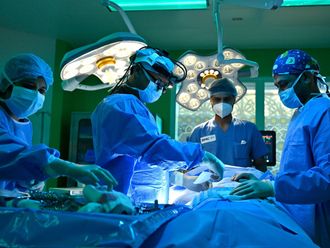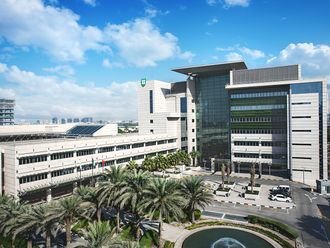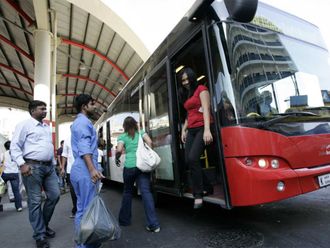Dubai: Doctors in a Dubai hospital surgically removed the uterus of an Arab woman after it expanded and weighed more than 10 times its original weight.
Latifa Hospital doctors succeeded in removing the uterus of an obese woman — who weighs 120kg — using keyhole surgery when it expanded from 70 grams to 1.1 kilograms over a period of five years.
The 52-year-old Arab national was diagnosed with adenomyosis, a condition in which the inner lining of the uterus (the endometrium) breaks through the muscle wall of the uterus. Its cause remains unknown.
“This [condition] caused the patient to suffer from an enlarged uterus, which resulted in extremely painful and heavy periods,” said Professor Arnaud Wattiez, gynaecology consultant at Latifa Hospital.
The displaced endometrial tissue continues to act as it normally would — thickening, breaking down and bleeding — during each menstrual cycle and this caused the enlarged uterus and painful, heavy periods, Professor Wattiez explained.
The patient said the pain she went through was excruciating. “You can’t even imagine what I went through in the last five years. I couldn’t sleep from the pain and the bleeding, it was so extreme that I had to come to the hospital every time I had my period,” she said.
The patient said doctors had, for the past two years, advised her to get a hysterectomy or have her uterus removed through conventional surgery but given her weight and uterus size, she was afraid to go under the knife.
“It was only until I learnt about the minimally invasive laparoscopic techniques adopted at Latifa Hospital with increased precision and success rate that I agreed to the surgery,” the patient said.
Dr Razan Adil Nasir, specialist at Latifa Hospital, said that there were several difficulties attributed to the women’s weight and uterus size.
“Obesity was a big risk factor that we had to take into account, for which laparoscopic surgery is a better option because of fewer complications and faster recovery. Obesity made it very difficult to maintain stable anaesthesia in the laparoscopic surgery position, hence she was kept straight on her back during surgery, which made it more challenging,” Dr Nasir said.
Laparoscopy, often called keyhole surgery, is a minimally invasive procedure wherein instead of cutting a large incision, doctors cut small incisions of up to half an inch and use it as a passageway for the laparoscope, a thin medical tube with a high-intensity light and camera. Instruments are then introduced through the ports, allowing access to the patient’s internal organs.
Doctors said the patient was able to sit up right away after the surgery.
The patient, who recovered successfully and has been discharged, lauded the team of doctors and staff at Latifa Hospital.
“I did not feel any pain after the surgery and I did not bleed You can’t imagine how happy I am now after the surgery. The pain that I went through for years is gone,” she said.











